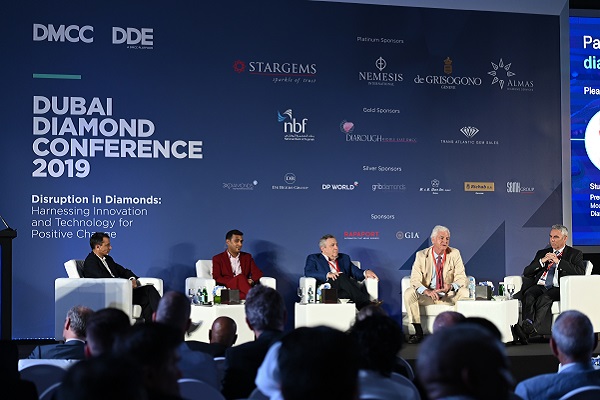|
|
Synthetics vs. Natural: The Battle over Value
Nov 13, 2019 5:26 AM
By Avi Krawitz
|
|
|

RAPAPORT... In a jam-packed program, the Dubai Diamond Conference set the stage well for its main bout: finally, a match-up between the lab-grown and mined diamond producers.
At its core, the debate among panelists in the discussion titled “Market Disruption — the Advent of Lab-Grown Diamonds,” boiled down to one fundamental question: What makes a diamond valuable?
In one corner, representing the lab-grown industry, Amish Shah, president of Altr Created Diamonds, saw the value in the emotion diamonds represents. “The rest is price,” stressed the synthetics proponent, who focuses on branding when selling lab-grown diamond engagement rings. As technology evolves and costs decline, he continued, economies of scale will create a better pricing environment, spurring demand and improving margins.
The “myth” about rarity will not hold up among consumers, since there are millions of carats coming into the system each year, and enough coming back as recycled, Shah argued. Besides, if diamonds had intrinsic value, their value would have gone up year over year, he added – a barb directed at the audience of mainly natural diamond dealers, manufacturers and miners.
“The value of the diamond is built when you package it and brand it in the consumer’s eye,” he stressed. “The origin — i.e. whether it’s mined or made –— doesn’t guarantee a value.”
“I couldn’t disagree more,” retorted De Beers marketing guru Stephen Lussier, sitting on the other side of the stage in his signature beige suit. “We can differentiate by origin because it’s a different thing scientifically, environmentally, in its social impact and in the consumer attitude. A natural diamond is inherently rare and precious,” stressed the De Beers’ vice president for consumer and brands.
Responding to Shah’s point that diamond prices had come down, Lussier distinguished between an investment and the value of something precious. “It’s what value the diamond has in the world,” he explained. “People need to see the diamond as something they will wear in 20 years’ time and [that will] retain its preciousness. That’s not an investment.”
The real discussion, he asserted, is what the consumer value proposition is.
To answer that, he said people needed something inherently precious to mark precious moments in their lives. “That’s why the diamond has been such a successful product to mark life’s special occasions,” he noted. “It delivers that preciousness and has enduring value, which is what people are looking for when they’re marking an important occasion.”
A natural diamond’s value grows with time because it is difficult to find, and the cost of extraction is getting higher, Lussier argued. You can’t sell a lab-grown diamond the same way, because we can make as many as we want; it doesn’t have that enduring value or preciousness, he stated.
In the view of De Beers – which in 2018 launched its own lab-grown jewelry brand, Lightbox – synthetics provide other opportunities. Given their already low and declining cost, the industry can do fun and colorful things with them, Lussier said. After all, he added, there’s a big market for inexpensive jewelry that doesn’t have enduring value.
For Shah, price sustainability relates to desirability, which is created through branding. Plus, the low cost of lab-grown production means the trade can achieve margins that have been eroded in the mined-diamond space. That profit will help the industry create more brands that will add value and create consumer desire, he reasoned.
The question, then, asked Lussier, is whether that margin is sustainable in the long-term, since lab-grown prices are likely to decline. He predicted that with time, the two products would segment into different markets to create a non-competing incremental jewelry business, he concluded.
The panelists half-jokingly agreed to reconvene in five or 10 years to see who was right. Until then, as the battle over how to market diamonds plays out, the natural industry must recognize where its real value lies.
An edited version of this article was first published in the November issue of Rapaport Magazine.
Image: Participants in the panel discussion on disruption by lab-grown diamonds at the Dubai Diamond Conference. From left: moderator Anish Aggarwal, founder of Gemdax; Amish Shah, president of ALTR Created Diamonds; William Shor, managing partner of Caspian VC; Stephen Lussier, De Beers’ vice president of consumer and brands; Stuart Brown, CEO of Mountain Province Diamonds. (DMCC)
|
|
|
|
|
|
|
|
|
|
Tags:
ALTR Diamonds, Avi Krawitz, De Beers, diamonds, Dubai Diamond Conference, Jewelry, lab-grown diamonds, Stephen Lussier, Synthetics
|
|
|
|
|
|
|
|
|
|
|

|
|